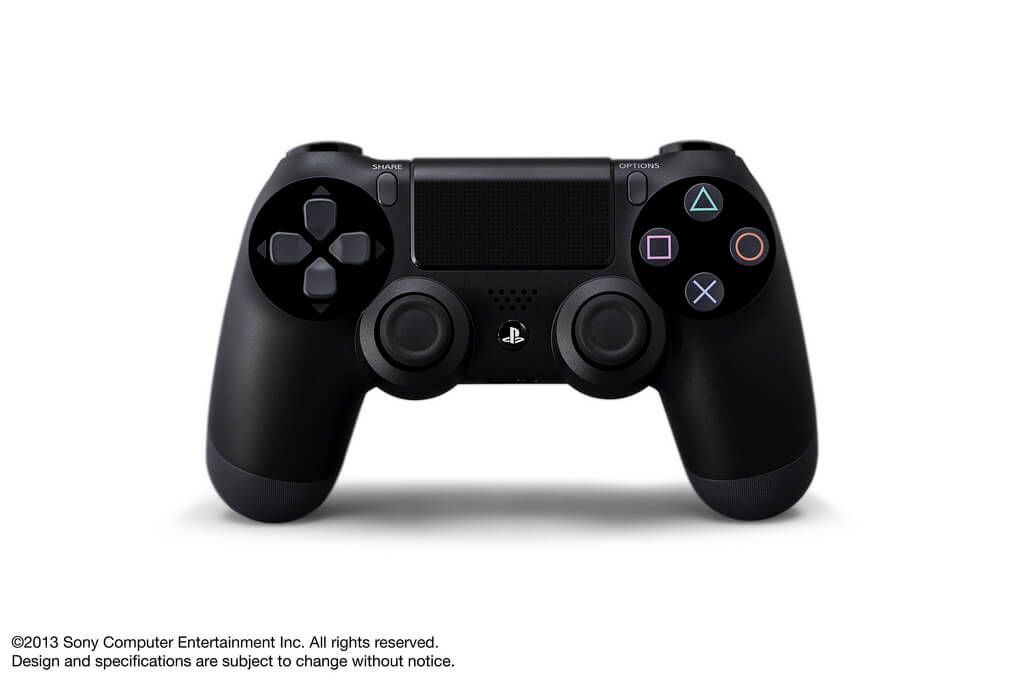Despite Sony's message that the gamer (not the living room) was the centerpiece of the PlayStation 4 experience, it was the DualShock 4 which stole much of the spotlight at last night's Future of PlayStation event. In a conference that saw surprisingly little revealed about the PlayStation 4 itself, an abundance of time was devoted to its brand new controller -- the center touchpad, the share functions and its even its LED player log-in light-bar.
Following the initial reveal, though, Sony has issued a more comprehensive breakdown of the DualShock 4 -- and the PS4's broader range of peripherals -- through a series of press releases and screenshots.
As the gallery below illustrates from all angles, the DualShock 4 is the result of a profound facelift; it's more aesthetically evolved over its predecessor than any of the controller's iterations ever have been. Discarded are the L2/R2 buttons resembling lumps, replaced instead by concave triggers that conform to their main role as, you know... triggers. Longer, wider, more formidable hand grips have been added in place of the DualShock 3's shorter stubs -- which should offer more stability when reaching, and/or rubbing on the center touchpad. The venerable d-pad buttons have been laced with an extra inner groove, as have the dual analog sticks, which now bear the Xbox 360 controller's inverted-thumb-grip design.
[gallery order="DESC" columns="2" exclude="180398" orderby="title"]
Built into the top of the DualShock 4 is also a speaker and a headset jack which Sony says deliver "high-fidelity" sound effects from gameplay. Ordinarily, such a feature might seem trifling compared to the more prominent additions, but Sony announced today that headsets will be bundled with every PlayStation 4 when it launches this Holiday season. Headsets were absent as add-ins with the PlayStation 3, and voices in public game-chat lobbies followed suit. With Microsoft and Sony both aspiring for greater online connectivity in the next-generation, it's only logical to help reverse the deafening trend by equipping each gamer for chat right out of the box.
As for the DualShock 4's sleek LED light bar, not only can it emanate multiple colors, signalling which logged-in player it currently belongs to -- the colors can be sensed by PlayStation Eye, the console's new motion-sensing camera apparatus, to provide greater accuracy in mapping out a user's location within a room. PlayStation Eye will also communicate with PlayStation Move, a link that Sony believes will increase the verisimilitude of in-game, motion-based animations.
And speaking of PlayStation Move, it seems that the original wand-shaped apparatus Sony first debuted in 2010 has been well-proofed for the future. It's entirely possible that Sony is developing a second generation of the peripheral for PlayStation 4, but Sony's Shuhei Yoshida confirmed to Polygon that existing Move controllers will still be functional with the upcoming console.
Unfortunately, he couldn't say the same for DualShock 3's -- their support was flatly ruled out. It's unclear whether the DualShock 3's Bluetooth 2.0 technology simply can't synchronize with the PlayStation 4 (which uses Bluetooth 2.1 to communicate with the DualShock 4), but it's hard to imagine Sony not developing certain games specifically around the DS4's unique capabilities. Precluding any controller without a touchpad and an LED light strip is a fast way to bring audiences on board with the console maker's new direction.
The PlayStation 4 -- the console itself -- might still be an enigma, but the DualShock 4 has offered a curious glimpse into Sony's peripheral future. How important do you think the controller will be to next-generation gameplay?
Follow Brian on Twitter @Brian_Sipple.

